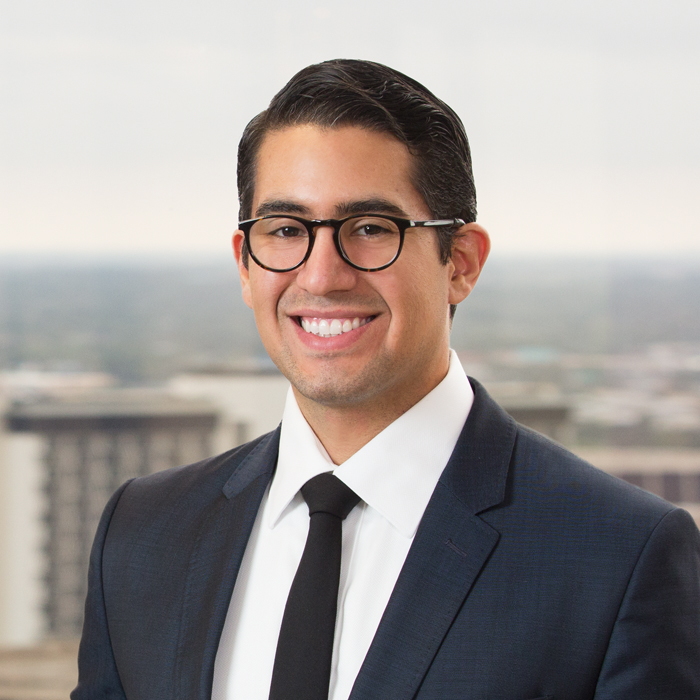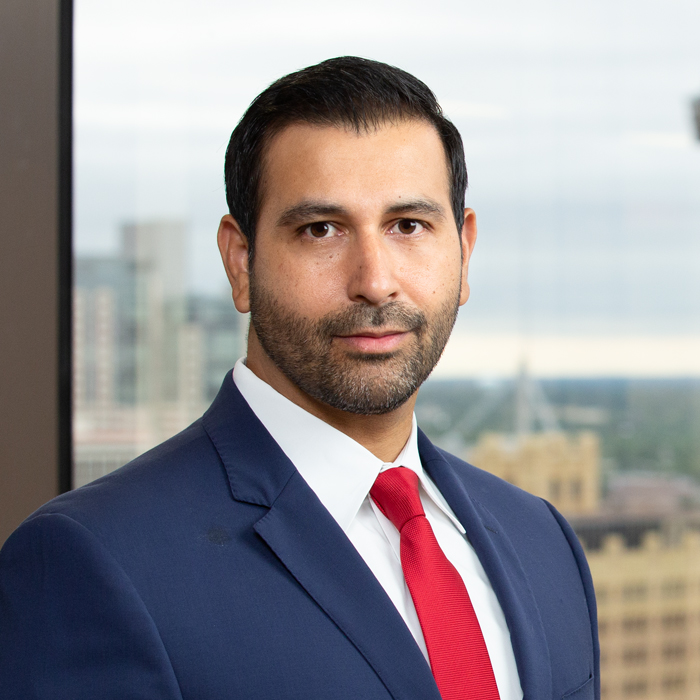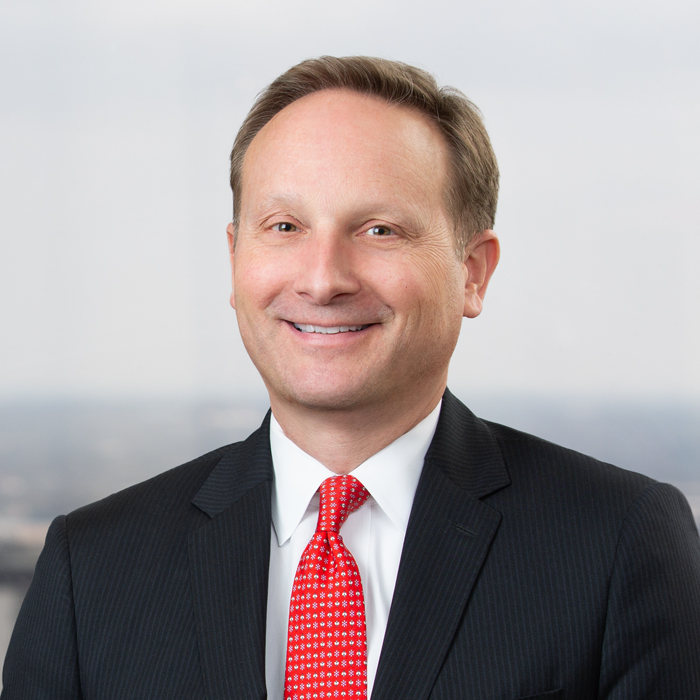As companies of all types and sizes continue to deal with the potential legal implications of the COVID-19 pandemic for their businesses, Jackson Walker provides insights and resources on the COVID-19 Legal Resources & Insights site.
Time is of the essence for businesses to apply for relief from the Paycheck Protection Program. Jackson Walker finance partners Lindsey Berwick and John Wittenberg join hosts Art Cavazos and Daniel Maldonado to discuss the recent updates to the PPP regarding eligibility, forgiveness, and options available for businesses that have already received a PPP loan and those that did not before but are eligible now. For more details about PPP loans, visit the Small Business Administration’s FAQ page.
Related Insights:
Paycheck Protection Program – An Overview of the 2021 PPP and Update on PPP Loan Forgiveness »
Paycheck Protection Program – Biden-Harris Administration Announces PPP Reforms »
Daniel Maldonado: Hi, everybody. I’m Daniel Maldonado.
Art Cavazos: And I’m Art Cavazos. This is Jackson Walker Fast Takes.
Daniel Maldonado: And we’re just two business attorneys with a simple question—
Art Cavazos: What if you had access to hundreds of lawyers in nearly every industry and practice area ready to give you real, actionable information for your business?
Daniel Maldonado: Art and I will be hosting JW Fast Takes occasionally to find out and share the answer with you.
Art Cavazos: And we might even have some fun along the way.
Daniel Maldonado: This week, we talked to Lindsey Berwick and John Wittenberg on the Paycheck Protection Program and some recent changes on eligibility and forgiveness. Lindsey and John, thanks for talking with us.
Lindsey, my first question is for you. Let’s get to the basics of the Paycheck Protection Program. What is the PPP in general terms?
Lindsey Berwick: Sure, thanks for having us. The Paycheck Protection Program, otherwise known as the PPP, is a loan program that provides assistance and relief to small employers and certain eligible self-employed individuals that have been impacted by COVID-19, and the loans are 100% guaranteed by the SBA.
Art Cavazos: John, I know some recent updates came out this week to the PPP program. Could you tell us a little bit about that?
John Wittenberg: Sure, I’d be happy to. Glad to be here as well.
This week, as the SBA has been prone to do since the program started last March, has provided additional updates to the program. Right now, the program is scheduled to expire on March 31st. That may change with the pending American Rescue Plan legislation. But right now, it’s the earlier – when the money runs out on March 31st.
This week, the SBA came out with a couple of new applications. They’ve tweaked their applications over the last 12 months that the program has been in place to really make it easier for folks to complete. The new applications are found on the SBA’s website. We encourage folks to go to that website to look at applications for First Draws and Second Draws, applications for forgiveness, answers to questions—they have an FAQ section, which is very, very helpful. They also publish on that website the interim final rules, which are the kind of official interpretations and proclamations related to the to the program.
Art Cavazos: When you say that the program will be expiring March 31st, does that mean they will be accepting no new applications at that time or possibly earlier if the money runs out?
John Wittenberg: Yes, that’s the deadline for applying for a PPP loan. I think it’s important for folks to realize that this is lender-centric, if you will. In other words, the lenders can themselves decide whether or not they’re going to continue to accept applications all the way up ’til March 31st. That’s the program period. We have seen in other instances lenders saying we don’t want to be slammed at the end of the program, so we’re going to potentially cut it off a week or two early. The key is to check with your lender and stay in contact with your lender as far as what their timing may be.
Art Cavazos: So, the takeaway for potential borrowers is act fast?
John Wittenberg: Very much so.
Art Cavazos: Who’s eligible for the Second Draw? Do you have to have had a First Draw in order to apply for a Second Draw?
John Wittenberg: Yes.
Art Cavazos: Okay. Can you still apply for First Draw if you never did last year?
John Wittenberg: Yes, you can, assuming you meet the eligibility requirements.
Art Cavazos: For those businesses who did have a First Draw last year and would like to apply for a Second Draw this year, I’m hearing that one of the biggest tripping points or obstacles is they need to have a demonstrated a 25% loss in gross revenue as compared to the same quarter in 2019. So, what can a business do if maybe they lost 20%-24% of their gross revenue – still a very significant loss – but don’t meet that 25% threshold?
John Wittenberg: Then they’re not going to be eligible, Art. It’s kind of a black-and-white rule, if you will. As far as that eligibility requirement, it’s a 25% reduction in revenue. The way they did that is they calculate it by comparing the applicant’s quarterly gross receipts for one quarter in 2020 with those receipts for the corresponding quarter in 2019. So, if you use Q3 for ’20, you have to look at Q3 for ’19. I think there’s a little bit of confusion with when the rules came out on how that worked, but that’s how the 25% reduction is calculated. You have to provide the supporting documentation. The PPP lenders are very, very stringent on that point. They want you to provide evidence that you did suffer a 25% reduction.
Lindsey Berwick: In addition to what John just explained on the 25% reduction, the other unique eligibility requirement for Second Draw Loans is they’ve reduced the number of employees for eligible borrowers from 500 to 300. Unlike in the First Draw round where you could also use the alternative size standard from the SBA, that’s no longer applicable. So, it’s a hard-and-fast 300-employee rule for the Second Draw applicants, and that’s inclusive of affiliates, so the affiliation rules still apply as well.
Art Cavazos: Do those rules apply to both First and Second Draw, or is that also a Second Draw-only requirement?
Lindsey Berwick: Well, the 300 employee is a second-draw-only requirement. The First Draw still remains at 500, or the applicable alternative standard. The affiliation rules applied to both draws and across the board are the same.
Art Cavazos: It sounds like if you still haven’t made your First Draw, it may be a little easier to still get that, but if you’re looking for a Second Draw, there are going to be some more stringent requirements that need to be met in order to get that.
Lindsey Berwick: That’s right.
Art Cavazos: How can the loan proceeds be used if you do manage to get proceeds?
John Wittenberg: The PPP proceeds, they’ve actually expanded the permitted uses when they were restarted the program in January. So, I’ll run through the list really, really fast. Eligible payroll costs, and there’s a specific definition of what constitutes an eligible payroll costs, I would just encourage the listeners to, again, go to the SBA website to see that laundry list. Group health care, disability, all the employee benefits; mortgage interest, rent payments, utility payments; interest payments on debt obligations that were incurred before February 15, 2020; refinancing of SBA idol loan made between January 31, 2020, and April 3, 2020. There’s some other items that I won’t go into in great detail that were added as far as operations, expenditures, property damage costs, supplier costs, etc. Again, it’s a long list and I would just encourage folks to go to the SBA website to get the details on that. But those are the permitted uses of PPP loan proceeds.
Daniel Maldonado: John, is there a current moratorium on when the loan needs to begin to be repaid?
John Wittenberg: The way that the loan terms work, it’s a five-year maturity. There’s a deferment—which I think is basically the equivalent of a moratorium—of principal and interest until the date on which the SBA remits the forgiveness to the lender. Once that happens, that’s when the loan is forgiven, obviously, there’s nothing to be paid back. If the loan is not forgiven, it has to be paid back at that start – the amortization and the repayments – at that time. It has to be, basically, 10 months after the end of the loan covered period. The loan covered period is between eight and 24 weeks. So, that’s the period—when they say covered period, a lot of folks, I think, have a little bit of a misunderstanding of that—that’s the period of time from the date the loan is dispersed until effectively the funds are used up, or 24 weeks if you go all the way out the 24 weeks. So, there is effectively a moratorium on payments in the sense of a deferment of payments for that period of time.
Daniel Maldonado: John, you say that the loan can be forgiven. Is that true? That sounds a little too good to be true. What is the process for turning this loan into a grant and having it forgiven?
John Wittenberg: The primary criteria for loan forgiveness under the PPP is using the loan proceeds for permitted purposes during the covered period. Sixty percent of the loan proceeds must be used for payroll costs. As Lindsey mentioned when was giving an overview of the program, this is a program that really was intended and remains out there to help folks make payroll, to keep their employees on the payroll. So, they want at minimum of 60% of the loan proceeds to be used for that purpose. If it is and you otherwise satisfied the eligibility requirements – so you’re eligible for the loan, you used it for proper purposes – then you are, generally speaking, going to be entitled to forgiveness, meaning, of course, that you don’t have to pay the loan back.
Daniel Maldonado: Lindsey, can you speak a little bit to the timing of such forgiveness?
Lindsey Berwick: Yes. So, you submit your loan forgiveness application to the lender who made the PPP loan, and they have 60 days from receipt of a complete application – it has to be all supporting documents included – to review the application and issue a forgiveness decision to the SBA. Then the SBA has a time frame of 90 days after the lender issues its decision to the SBA to actually remit the forgiveness amount to the lender. You are essentially looking at 150 days, subject to a greater period if the loan is under review by the SBA for any reason, or if any of its affiliate loans are underwritten by the SBA.
Art Cavazos: Have we gotten any numbers or data back on how many loans are being forgiven or what percentage of loans are being forgiven?
Lindsey Berwick: Yeah, we have some numbers that are probably stale by now. The last numbers we saw, there were approximately 34% of the loans have completed the loan forgiveness process, which is a total of approximately 31% of the total 2020 PPP volume. Across all loan sizes, over 99% of loan value has been forgiven on loans that have actually completed the forgiveness process. Where a lot of borrowers are struggling is if they have a loan or have a group of loans that total over $2 million or in some instances over $1 million, loans over $1 million only account for 1% of the forgiven count. So, there’s still a lot to be said by the SBA and determined on what their official “loan review” looks like for the larger loans.
Art Cavazos: So the jury’s still out, so to speak.
Lindsey Berwick: That’s right.
Art Cavazos: Are there any differences in the requirements for forgiveness between the First and Second Draw?
John Wittenberg: No, they’re substantially the same.
Art Cavazos: Are forgiven amounts taxable, generally?
John Wittenberg: Not for federal income tax purposes. They are excluded from income. The challenge is, apparently at the state-level in the state of Texas, the Comptroller’s office has—I don’t know if they’ve suggested as much as they’ve kind of left open the chance that a portion of the funds that are forgiven, you’d still have to include them in the total revenue calculation for Texas franchise tax purposes. So, that’s something that is going to probably weave its way through the Legislature during this current session. I know there’s, as I understand it, a couple of bills pending that would address this. So, federal income tax, no; franchise tax, stay tuned.
Art Cavazos: Well, thanks, John and Lindsey. Appreciate you sharing your insights.
John Wittenberg: Pleasure being with you. Thank you.
Lindsey Berwick: Thank you.
Follow Jackson Walker LLP on LinkedIn, Twitter, Facebook, and Instagram.
The music is by Eve Searls.
This podcast is made available by Jackson Walker for informational purposes only, does not constitute legal advice, and is not a substitute for legal advice from qualified counsel. Your use of this podcast does not create an attorney-client relationship between you and Jackson Walker. The facts and results of each case will vary, and no particular result can be guaranteed.
Please note: This article and any resources presented on the JW Coronavirus Insights & Resources site are for informational purposes only, do not constitute legal or medical advice, and are not a substitute for legal advice from qualified counsel. The laws of other states and nations may be entirely different from what is described. Your use of these materials does not create an attorney-client relationship between you and Jackson Walker. The facts and results of each case will vary, and no particular result can be guaranteed.


